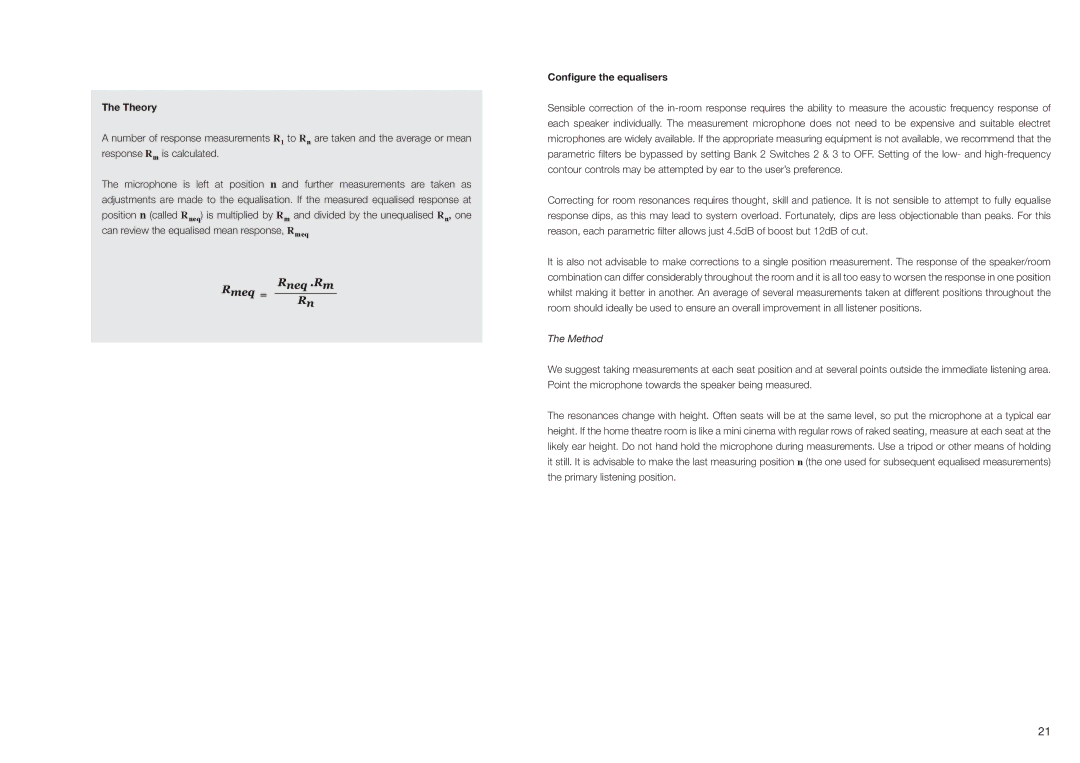
The Theory
A number of response measurements R1 to Rn are taken and the average or mean response Rm is calculated.
The microphone is left at position n and further measurements are taken as adjustments are made to the equalisation. If the measured equalised response at position n (called Rneq) is multiplied by Rm and divided by the unequalised Rn, one can review the equalised mean response, Rmeq
Configure the equalisers
Sensible correction of the
Correcting for room resonances requires thought, skill and patience. It is not sensible to attempt to fully equalise response dips, as this may lead to system overload. Fortunately, dips are less objectionable than peaks. For this reason, each parametric filter allows just 4.5dB of boost but 12dB of cut.
It is also not advisable to make corrections to a single position measurement. The response of the speaker/room combination can differ considerably throughout the room and it is all too easy to worsen the response in one position whilst making it better in another. An average of several measurements taken at different positions throughout the room should ideally be used to ensure an overall improvement in all listener positions.
The Method
We suggest taking measurements at each seat position and at several points outside the immediate listening area. Point the microphone towards the speaker being measured.
The resonances change with height. Often seats will be at the same level, so put the microphone at a typical ear height. If the home theatre room is like a mini cinema with regular rows of raked seating, measure at each seat at the likely ear height. Do not hand hold the microphone during measurements. Use a tripod or other means of holding it still. It is advisable to make the last measuring position n (the one used for subsequent equalised measurements) the primary listening position.
21
